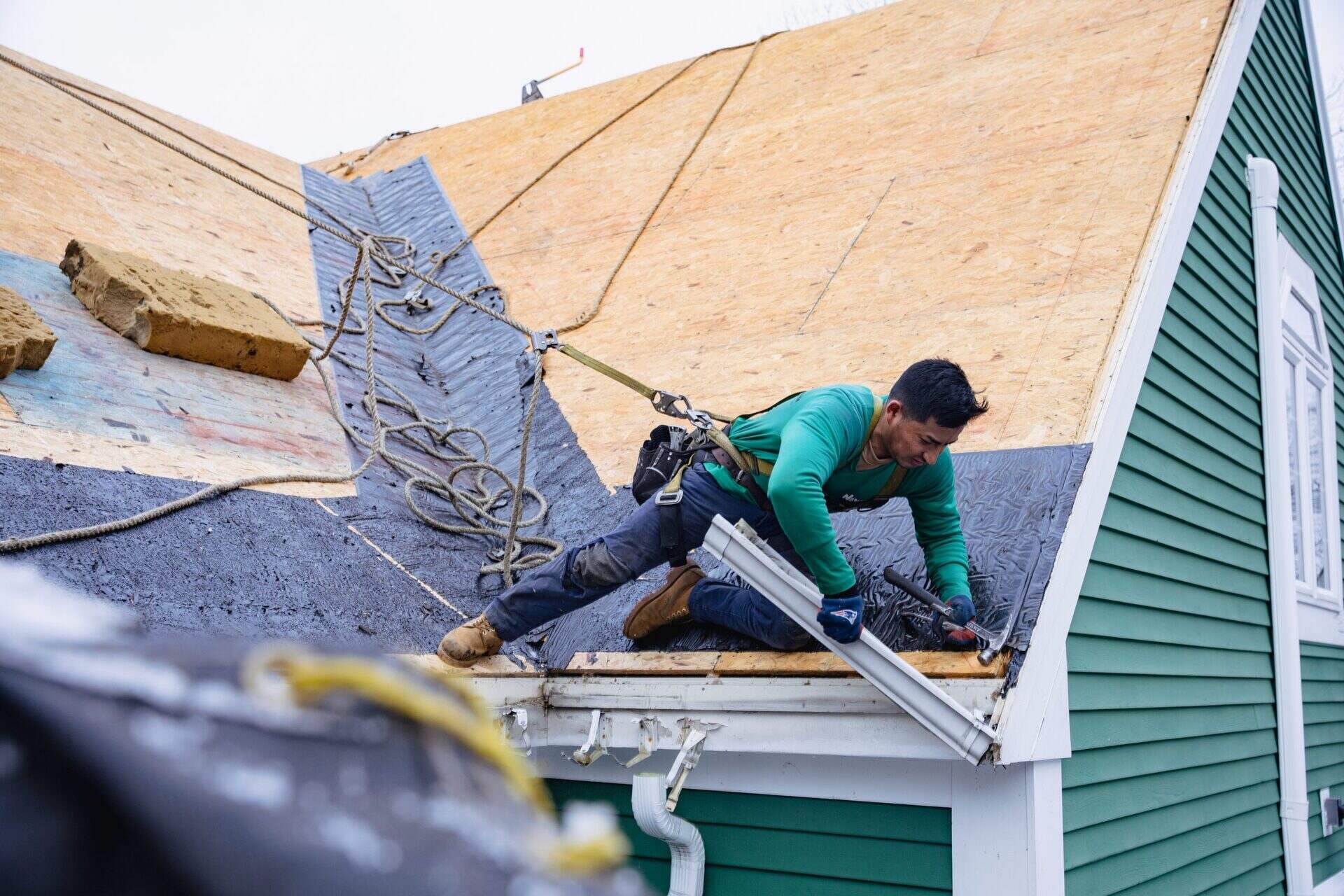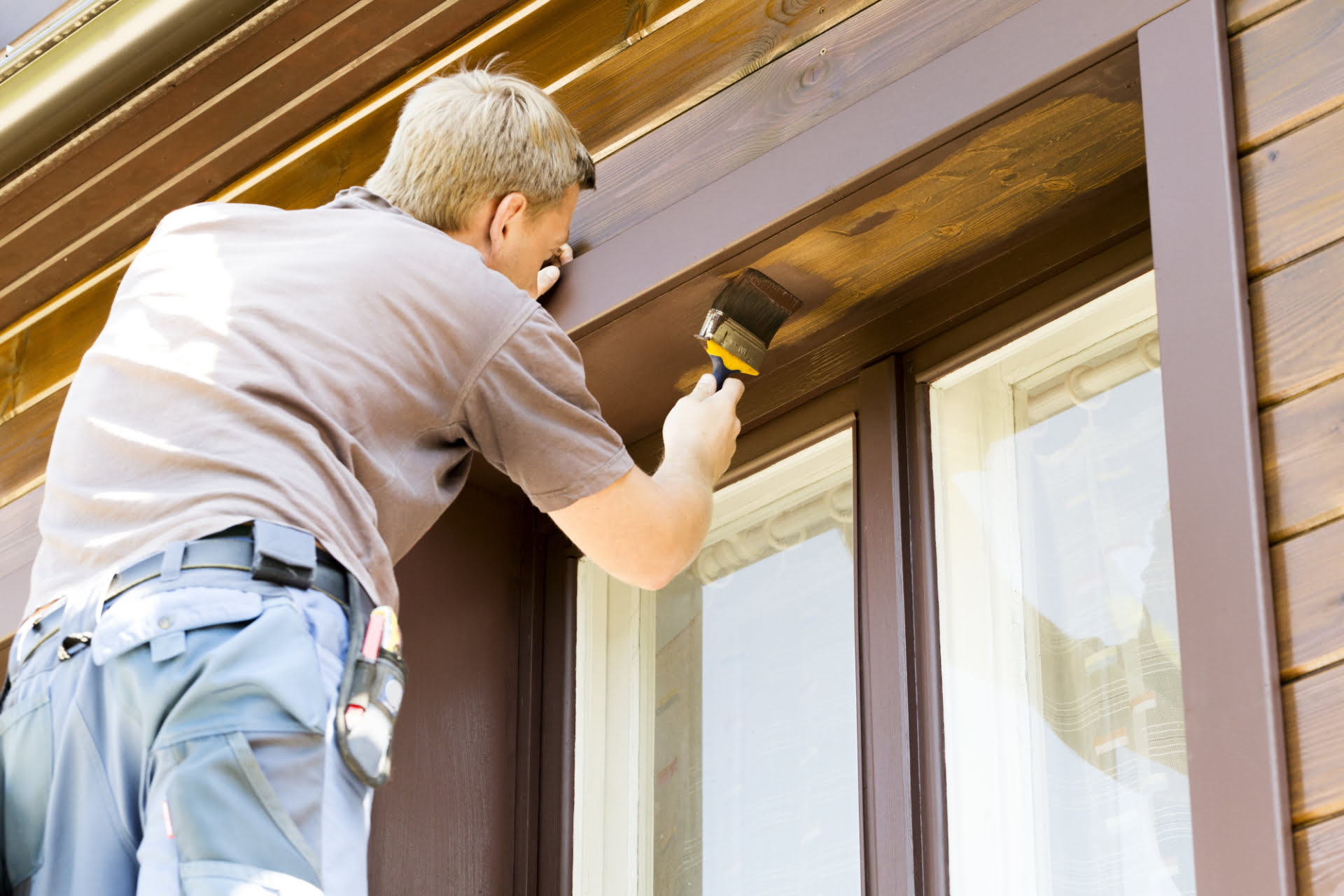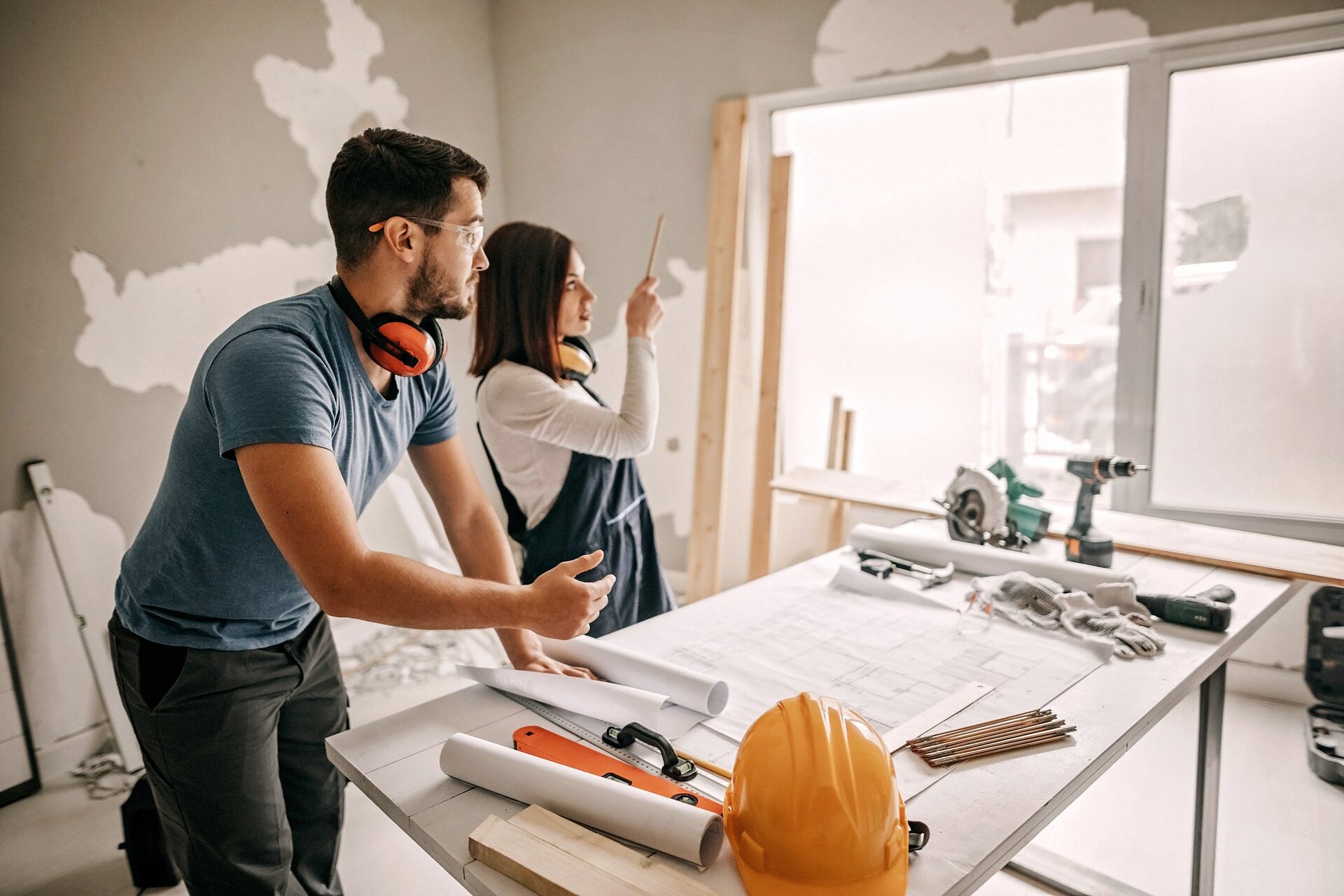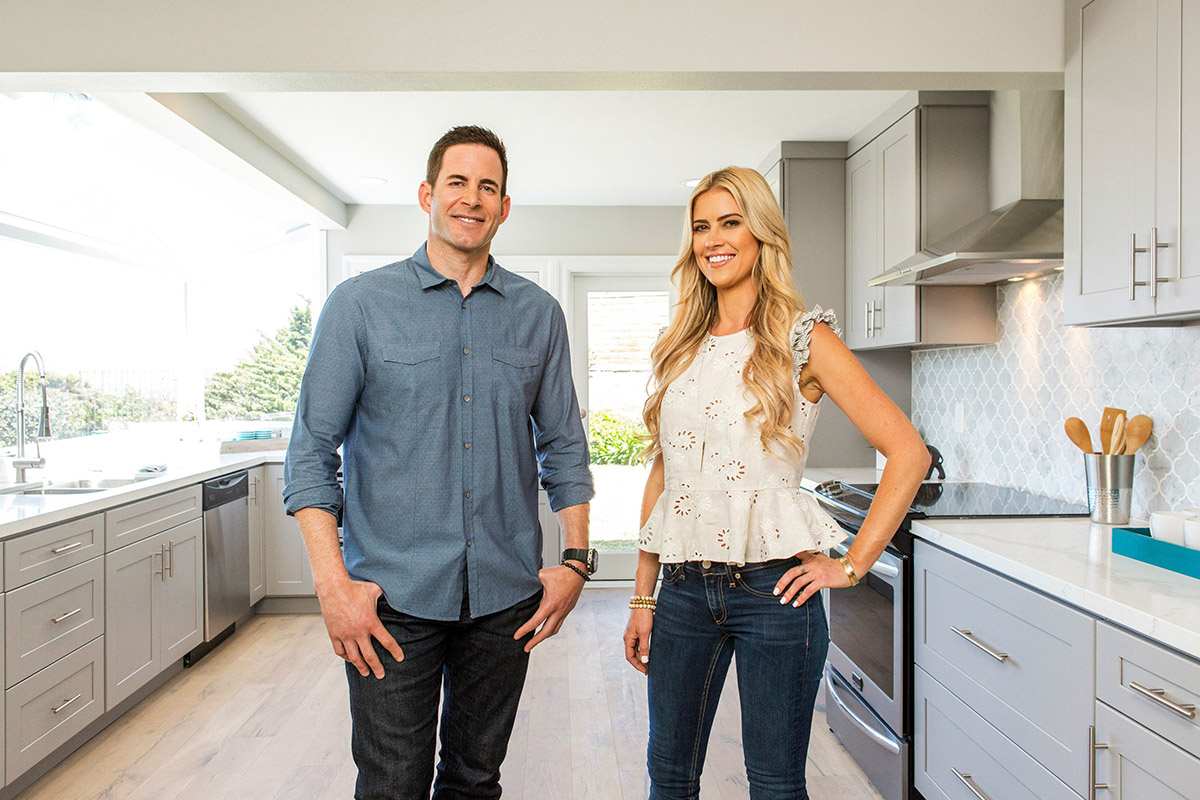Home>Renovation & DIY>Home Renovation Guides>How To Make Home Improvements Within The Uniform Construction Code


Home Renovation Guides
How To Make Home Improvements Within The Uniform Construction Code
Modified: January 4, 2024
Learn how to make home improvements within the Uniform Construction Code with our comprehensive home renovation guides. Ensure your projects meet all necessary regulations.
(Many of the links in this article redirect to a specific reviewed product. Your purchase of these products through affiliate links helps to generate commission for Storables.com, at no extra cost. Learn more)
**
Introduction
**
Are you considering making some upgrades or renovations to your home? Whether you're dreaming of a kitchen remodel, a new deck, or an additional room, it's crucial to understand and adhere to the Uniform Construction Code. This code sets the standard for construction and renovation projects, ensuring that they are carried out safely and in compliance with building regulations. In this comprehensive guide, we will explore the essential steps and considerations for making home improvements within the framework of the Uniform Construction Code. From obtaining permits and approvals to hiring contractors and ensuring compliance with building codes, this guide will equip you with the knowledge and insights needed to navigate the home improvement process successfully. So, let's dive in and discover how to make your home renovation dreams a reality while staying within the bounds of the Uniform Construction Code.
Key Takeaways:
- Understanding the Uniform Construction Code is crucial for safe and compliant home renovations. It sets standards for materials, energy efficiency, and more, ensuring your project meets legal and safety requirements.
- Planning, budgeting, and hiring skilled professionals are essential for successful home improvements. Prioritize compliance with building codes and obtain final approvals to ensure a safe and high-quality outcome.
Read more: How To Make A Home Improvement List
Understanding the Uniform Construction Code
Before embarking on any home improvement project, it’s essential to have a clear understanding of the Uniform Construction Code (UCC). The UCC is a set of regulations that governs the construction, renovation, and maintenance of buildings to ensure the safety and welfare of occupants. It encompasses various aspects, including structural stability, fire safety, energy efficiency, and accessibility.
The UCC is typically adopted at the state or local level, and its requirements may vary based on your location. It sets forth standards for building materials, construction techniques, electrical and plumbing systems, and other critical elements of home improvement projects. By familiarizing yourself with the UCC, you can ensure that your renovations align with the prescribed guidelines, thereby avoiding potential legal and safety issues.
Furthermore, staying informed about the UCC can help you make informed decisions when planning your home improvements. For instance, understanding the code’s energy efficiency requirements can guide you in selecting eco-friendly materials and systems that not only comply with regulations but also contribute to long-term cost savings and environmental sustainability.
As you delve into the specifics of your project, consider consulting with professionals who are well-versed in the UCC. Architects, engineers, and contractors with expertise in building codes can provide valuable insights and ensure that your plans align with the regulatory framework. By gaining a solid grasp of the UCC’s provisions and engaging with knowledgeable professionals, you can lay a solid foundation for a successful and compliant home improvement journey.
Obtaining Permits and Approvals
One of the fundamental aspects of undertaking home improvements within the Uniform Construction Code is securing the necessary permits and approvals. Before initiating any construction or renovation work, it’s crucial to obtain the required documentation from the relevant authorities. This process typically involves submitting detailed plans and specifications for review to ensure compliance with building regulations.
Depending on the nature and scope of your project, you may need permits for various aspects, such as structural modifications, electrical work, plumbing alterations, and additions to the existing footprint of your home. Each type of improvement is subject to specific regulations outlined in the UCC, and obtaining the corresponding permits is essential for legal and safety reasons.
When seeking permits, it’s advisable to engage with your local building department or permitting office. These entities are responsible for reviewing and approving construction plans, conducting inspections, and ultimately issuing the necessary permits. Building officials can provide valuable guidance on the specific requirements for your project and ensure that your plans align with the UCC’s provisions.
Furthermore, obtaining approvals from homeowners’ associations, architectural review boards, or other relevant entities may be necessary, especially in planned communities or historic districts. These additional layers of approval are designed to uphold community standards and preserve the architectural integrity of the neighborhood.
While the process of obtaining permits and approvals may seem bureaucratic, it is a critical step in ensuring that your home improvements are carried out safely and in accordance with established standards. By adhering to the regulatory framework and obtaining the necessary documentation, you can proceed with your project with confidence, knowing that it is legally sanctioned and meets the requirements set forth by the Uniform Construction Code.
Planning and Budgeting for Home Improvements
Embarking on a home improvement project within the framework of the Uniform Construction Code requires meticulous planning and budgeting. Before diving into the renovation process, it’s essential to outline your objectives, assess the scope of work, and establish a realistic budget that accounts for various expenses.
Begin by defining the specific improvements you wish to undertake, whether it’s a kitchen remodel, bathroom renovation, or structural modifications. Consider the functional and aesthetic enhancements you aim to achieve, and prioritize them based on your needs and preferences. This initial planning phase sets the stage for developing a comprehensive project scope and identifying the associated requirements.
Once you have a clear vision of your home improvement goals, it’s time to create a detailed budget. Factor in costs such as materials, labor, permits, professional fees, and contingency reserves to accommodate unforeseen expenses. Be diligent in researching the prices of construction materials and obtaining estimates from contractors to ensure that your budget is realistic and aligned with the prevailing market rates.
Moreover, consider the potential long-term benefits of your planned improvements, such as energy efficiency upgrades or durable materials that contribute to the longevity of your home. While these choices may involve higher initial costs, they can yield significant returns in terms of comfort, sustainability, and reduced maintenance expenses over time.
Throughout the planning and budgeting process, it’s advisable to engage with professionals who can provide valuable insights and help refine your plans. Architects, interior designers, and contractors with experience in home renovations can offer expertise in space planning, material selection, and cost-effective solutions, contributing to the overall success of your project.
By meticulously planning and budgeting for your home improvements, you can set realistic expectations, avoid financial surprises, and ensure that your project aligns with the requirements of the Uniform Construction Code. This proactive approach lays a solid foundation for a well-executed and compliant renovation journey, ultimately enhancing the comfort, functionality, and value of your home.
When making home improvements within the Uniform Construction Code, always obtain the necessary permits and inspections to ensure compliance with safety and building standards.
Hiring Contractors and Subcontractors
When undertaking home improvements within the framework of the Uniform Construction Code, selecting the right contractors and subcontractors is paramount to the success of your project. Whether you’re planning a major renovation or a minor upgrade, engaging skilled professionals who understand and adhere to building codes is essential for ensuring quality workmanship and regulatory compliance.
Start by conducting thorough research to identify licensed and experienced contractors with a proven track record in home renovations. Seek recommendations from friends, family, and local community groups, and explore online reviews and testimonials to gauge the reputation and reliability of potential candidates. Additionally, verify that the contractors you consider are properly licensed, insured, and bonded, as this safeguards you against liabilities and ensures that the work meets legal requirements.
During the selection process, request references from each contractor and review their portfolio of completed projects. Look for examples that align with the scope and style of your own home improvements, and assess the quality of craftsmanship and attention to detail showcased in their work. Engaging in thorough due diligence at this stage can help you identify contractors who are capable of delivering the level of quality and compliance required by the Uniform Construction Code.
Furthermore, when the scope of your project involves specialized tasks such as electrical, plumbing, or HVAC work, it may be necessary to hire subcontractors with expertise in these areas. Similar criteria for selecting subcontractors apply, including verifying their credentials, reviewing past projects, and ensuring that they are well-versed in the regulatory requirements specific to their trade.
Once you have narrowed down your choices, schedule interviews with the potential contractors and subcontractors to discuss your project in detail. Use this opportunity to communicate your expectations, inquire about their familiarity with the Uniform Construction Code, and assess their approach to regulatory compliance. A transparent and collaborative dialogue during these discussions can provide valuable insights into the professionals’ commitment to upholding building standards and delivering a compliant and successful home improvement project.
By carefully selecting contractors and subcontractors who prioritize quality, safety, and regulatory adherence, you can set the stage for a harmonious and compliant home renovation experience. This strategic approach not only ensures that your project meets the requirements of the Uniform Construction Code but also contributes to the long-term durability and value of your home.
Read more: How To Make A Flood Channel Home Improvement
Ensuring Compliance with Building Codes
Adhering to building codes is a cornerstone of any home improvement project governed by the Uniform Construction Code. Building codes are designed to safeguard the structural integrity, safety, and livability of residential properties, and it is essential to ensure that your renovations align with these regulatory standards.
As you progress with your project, it’s vital to stay informed about the specific building codes and regulations applicable to your location. Building codes encompass a wide range of requirements, including structural design, fire safety, electrical and plumbing systems, energy efficiency, and accessibility standards. Familiarizing yourself with these provisions and engaging professionals who possess expertise in building codes can help you navigate the regulatory landscape effectively.
Throughout the planning and execution of your home improvements, prioritize the use of building code-compliant materials and construction techniques. From the selection of framing lumber to the installation of electrical fixtures, every aspect of your project should align with the prescribed standards. This not only ensures regulatory compliance but also contributes to the long-term safety and durability of your home.
Engaging with architects, engineers, and contractors who are well-versed in building codes is instrumental in upholding compliance throughout the renovation process. These professionals can guide you in making informed decisions, securing the necessary permits, and executing the work in accordance with regulatory requirements. Furthermore, they can conduct thorough inspections to verify compliance at various stages of the project, mitigating the risk of non-compliance issues arising during or after the renovation.
As you approach the completion of your home improvements, it’s crucial to prioritize the final inspections mandated by the building department or relevant authorities. These inspections serve as a critical validation of compliance with building codes, ensuring that the work meets the requisite standards before it is deemed complete. By proactively addressing any potential compliance issues identified during inspections, you can rectify them in a timely manner, thereby avoiding delays and ensuring that your project meets the regulatory benchmarks.
By prioritizing compliance with building codes throughout your home improvement journey, you can instill confidence in the safety, quality, and legal adherence of your renovations. This commitment to regulatory standards not only enhances the livability and value of your home but also contributes to the broader goal of upholding community-wide building safety and integrity.
Inspections and Final Approvals
As you near the completion of your home improvement project governed by the Uniform Construction Code, the process of inspections and obtaining final approvals becomes a pivotal step in ensuring compliance and regulatory adherence. Inspections serve as a mechanism for verifying that the work meets the prescribed standards and safety requirements, ultimately paving the way for the issuance of final approvals.
Prior to scheduling inspections, it’s essential to review the specific requirements outlined in the Uniform Construction Code and any additional regulations enforced by your local building department. Familiarize yourself with the inspection criteria relevant to your project, encompassing structural integrity, electrical and plumbing systems, fire safety measures, and other essential components of the renovations.
Coordinate with your contractors and subcontractors to ensure that the work is ready for inspection at each pertinent stage of the project. From the framing and rough-in phases to the installation of insulation and the completion of finishes, timely and thorough inspections are essential for validating compliance and identifying any potential non-conformities that require rectification.
Engage with the building department or relevant authorities to schedule the required inspections as per the stipulated timelines. Accommodate the inspectors’ visits and facilitate access to the work areas, allowing them to conduct comprehensive evaluations and assessments. Address any issues or deficiencies identified during inspections promptly, collaborating with your contractors to rectify non-compliant elements and ensure that the work aligns with the regulatory standards.
Upon successful completion of the requisite inspections, the final approvals can be sought from the building department or permitting office. This stage involves submitting the necessary documentation, including the inspection reports and any additional certifications or compliance attestations. The thoroughness and diligence demonstrated in adhering to the inspection outcomes and addressing any identified deficiencies can significantly expedite the final approval process.
Securing the final approvals signifies that your home improvements have met the stringent requirements of the Uniform Construction Code and other applicable regulations. It serves as a testament to the compliance, safety, and quality of the work, providing you with the assurance that your renovations have been executed in accordance with the prescribed standards.
By conscientiously navigating the inspections and final approval process, you can validate the regulatory adherence and integrity of your home improvements, ultimately enhancing the safety, functionality, and value of your residence within the framework of the Uniform Construction Code.
Conclusion
Embarking on home improvements within the parameters of the Uniform Construction Code necessitates a strategic and comprehensive approach to ensure compliance, safety, and the realization of your renovation aspirations. Understanding the regulatory framework, obtaining the requisite permits and approvals, and engaging with skilled professionals are foundational steps in this endeavor.
As you delve into the world of home renovations, remember that meticulous planning and budgeting are essential for setting the stage for a successful project. By aligning your vision with realistic objectives and financial considerations, you can navigate the renovation journey with confidence and clarity.
The selection of contractors and subcontractors who prioritize quality, regulatory adherence, and craftsmanship is instrumental in ensuring the successful execution of your home improvements. By collaborating with professionals who understand and respect the requirements of the Uniform Construction Code, you can instill confidence in the safety, compliance, and long-term integrity of your renovations.
Throughout the renovation process, prioritizing compliance with building codes and standards is paramount. From the selection of materials to the execution of construction techniques, a commitment to regulatory adherence ensures that your project upholds the prescribed benchmarks and contributes to the broader goal of building safety and integrity.
As you navigate the final stages of your home improvements, the thoroughness and diligence demonstrated in inspections and the attainment of final approvals are critical in validating compliance and regulatory adherence. Securing the necessary approvals signifies the successful alignment of your renovations with the stringent requirements of the Uniform Construction Code, providing you with the assurance of a compliant, safe, and high-quality outcome.
In conclusion, by embracing the principles of the Uniform Construction Code and navigating the home improvement journey with a commitment to compliance, safety, and quality, you can transform your residence while upholding the regulatory standards that safeguard the well-being and integrity of residential properties. This holistic approach not only enhances the livability and value of your home but also contributes to the broader objectives of building safety and community-wide regulatory adherence.
Frequently Asked Questions about How To Make Home Improvements Within The Uniform Construction Code
Was this page helpful?
At Storables.com, we guarantee accurate and reliable information. Our content, validated by Expert Board Contributors, is crafted following stringent Editorial Policies. We're committed to providing you with well-researched, expert-backed insights for all your informational needs.















0 thoughts on “How To Make Home Improvements Within The Uniform Construction Code”